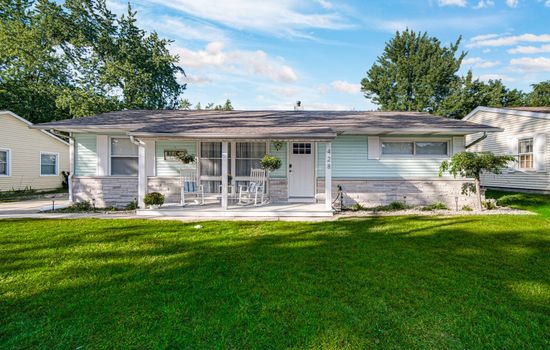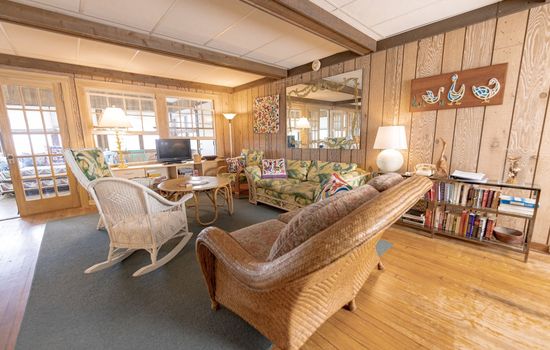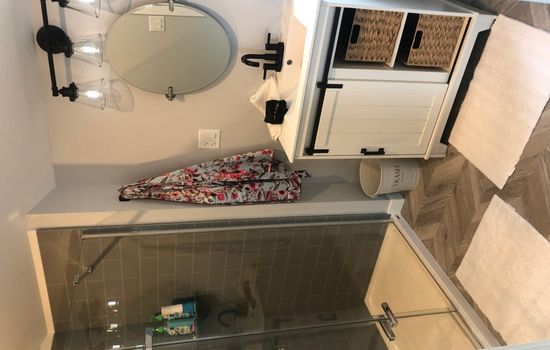The visitor center at Pullman National Historical Park is open Wednesday through Sunday from 10 AM to 4 PM, and closed on Monday and Tuesday.
There is no entrance fee to visit Pullman National Historical Park. No daily rate, per person, or annual membership is required for entry.
From Chicago, take I-94 East, exit at 111th Street, and head west to Cottage Grove Avenue, immersing yourself in historic charm just beyond the city’s bustling core.
The parking lot entrance is on 111th Street, next to the visitor center. It accommodates cars, but there is no specific information on RV or motorcycle parking. Overnight parking is not permitted, and there are no mentioned parking fees.
Accessibility & permits
Emergency
- Cell service availability:Full
Information not accurate?
Help us improve by making a suggestion.
Pullman National Historical Park, situated in the heart of Chicago’s Pullman neighborhood, is a testament to America’s rich industrial and labor history. This historic district, designated as a National Park Service unit by President Barack Obama in 2015, offers a unique blend of architectural grandeur, historical significance, and cultural depth.
As you step into the park, you are surrounded by the remnants of the first planned industrial community in the United States. The iconic Administration-Clock Tower Building, now housing the Pullman Visitor Center, stands tall with its imposing clock face, a reminder of the precise engineering and innovative spirit of George Pullman. Nearby, the Greenstone Church and Market Hall add to the architectural tapestry, their historic facades a glimpse into the lives of the workers who once called this place home.
The park is also home to the former Pullman Palace Car Works shops and the original 1880s worker housing, providing a stark contrast between the opulence of Pullman’s vision and the humble lives of his workers. Hotel Florence, named after Pullman’s daughter, offers a glimpse into the luxurious lifestyle of the era, while Arcade Park provides a tranquil oasis amidst the urban landscape.
For those interested in African American labor history, the A. Philip Randolph Pullman Porter Museum is a must-visit, honoring the legacy of a prominent leader in the civil rights movement. The Pullman Exhibit Hall, managed by the Historic Pullman Foundation, features a rotating array of exhibits that delve into the American stories that shaped this community.
Despite its urban setting, Pullman National Historical Park is alive with seasonal changes. In spring, the park’s gardens bloom with vibrant flora, while summer brings a series of cultural events and tours. Fall is marked by the rich hues of changing leaves, and winter reveals the stark beauty of the historic buildings against a snowy backdrop.
Visitors should not miss the opportunity to explore the neighborhood’s artisanal shops and local eateries, which offer a contemporary twist on the area’s historic charm. Whether you are drawn to the park’s historical significance, its cultural richness, or simply its unique urban landscape, Pullman National Historical Park is an immersive destination that promises to leave a lasting impression.
- Area (mi²)
- 0.1
- Annual visitors
- 300 000
- Established year
- 2015
Top 3 Facts about Pullman National Historical Park
The site includes the Hotel Florence, named after George Pullman’s daughter, which is part of a district that spans from East 103rd St. to East 115th St., a stretch of approximately 1.2 miles. This historic hotel and surrounding area are significant for their role in labor and civil rights history.
In this historic industrial enclave, urban landscapes blend with natural habitats. Leashed animals roam the grounds, while service animals accompany visitors into historic buildings. The area is home to a variety of urban wildlife, including birds such as sparrows and pigeons. Though not a traditional nature reserve, the park’s revitalized 12-acre grounds feature carefully manicured lawns and historic gardens, reflecting the meticulous planning of its industrial past. This unique blend of history and urban ecology offers a fascinating glimpse into America’s industrial heritage.
This historic site was once underwater, with the area submerged during high-water phases from 14.5 thousand years ago to 3.8 thousand years ago. Today, it stands near the shores of Lake Michigan, where beach ridges and dunes sculpted by ancient waters still adorn the landscape.
Family programs
- Junior Ranger
- Self-guided Tours
- Workshops & Hands-on Activities
- Living History & Cultural Demos
- Scavenger Hunts
- Arts & Crafts
Travel Tips
Plan Ahead
Plan a half-day visit, ideally on the first Sunday of May to October for the guided tour. Start at the Visitor Center, explore historic buildings, and rest at the Florence Hotel. Limited dining options, so plan meals accordingly. Paved paths, suitable for walking. Check seasonal hours and tour schedules.
Pack Appropriately
Pack layers for variable weather, sturdy shoes for hiking, and a waterproof jacket. For camping, bring a tent, sleeping bag, headlamp, and multi-tool. Check the season for specific needs like warm jackets or insect repellent.assistant
Pack layers for variable weather, sturdy shoes, and a waterproof jacket. For camping, include a tent, sleeping bag, headlamp, and multi-tool. Adjust for the season with warm jackets or insect repellent.
Respect Wildlife
Respect urban wildlife by not feeding them and keeping a safe distance. Stay on designated paths and dispose of trash properly to preserve the environment. Be mindful of local flora and fauna, especially during seasonal changes. Leave the area as you found it.
Stay Informed
Stay on marked trails, avoid ledges and water, and check weather conditions. Follow park rules and signs. For emergencies, call 911 or park authorities at 708-660-4700. Be cautious of seasonal changes and fire restrictions.
Seasons
Visit in spring, April to May, with mild temperatures (50s-60s°F) and blooming scenery. Enjoy free events during National Park Week (April 19-27) and anticipate the rail-themed Pullman Railroad Days in May, featuring restored historic railcars. Ideal for history and outdoor enthusiasts.
Explore historic neighborhoods and civil rights landmarks amid summer’s warm temps (70s-80s°F) and occasional thunderstorms. Don’t miss the STEAM Nature Fest in July, a vibrant celebration of science and nature. Ideal for outdoor enthusiasts and history buffs.
Experience the allure of autumn in this historic Chicago neighborhood, with crisp temperatures in the 50s and 60s from September to October. Join the First Sunday Walking Tours to explore industrial and labor history, set against a backdrop of vibrant fall colors. Ideal for a scenic and enlightening visit.
Experience winter’s charm from December to March, with temperatures often below 32°F and potential snow. Despite colder weather, the festive Winter Lights and ranger-led tours make it a unique and enchanting time to visit. Bundle up for a magical holiday atmosphere.
Information not accurate?
Help us improve by making a suggestion.
Where to stay
Frequently Asked Questions
Ready to dive into what Pullman National Historical Park has to offer? Let’s tackle some of the burning questions you might have as you plan your visit!
-
The drive from Chicago to Pullman National Historical Park is approximately 13 miles and takes about 18 minutes, depending on traffic conditions. It is located on the far south side of Chicago, about a 30-minute drive from downtown Chicago.
-
The park does not have traditional hiking trails, but it offers a 0.5-mile walking tour that includes approximately 45 minutes to 1 hour of standing. A lightweight wheelchair is available for those who need it. The area is also connected by pathways and green spaces as part of the Pullman Cultural Trail.
-
Dogs must be on a leash no longer than 6 feet at all times. They must also be restrained and never left unattended. Owners are responsible for removing their dog’s fecal matter.
-
Yes, parking is free. It includes self-parking and is available on-site. There are no fees for parking.
-
The 1894 Pullman Strike and Boycott, triggered by George Pullman’s decision to lower wages but not rents during the economic depression of 1893, led to a nationwide labor action supported by the American Railway Union under Eugene V. Debs. The strike was violently suppressed by federal troops deployed by President Grover Cleveland in June and July 1894. This event significantly impacted American labor history and urban planning.







